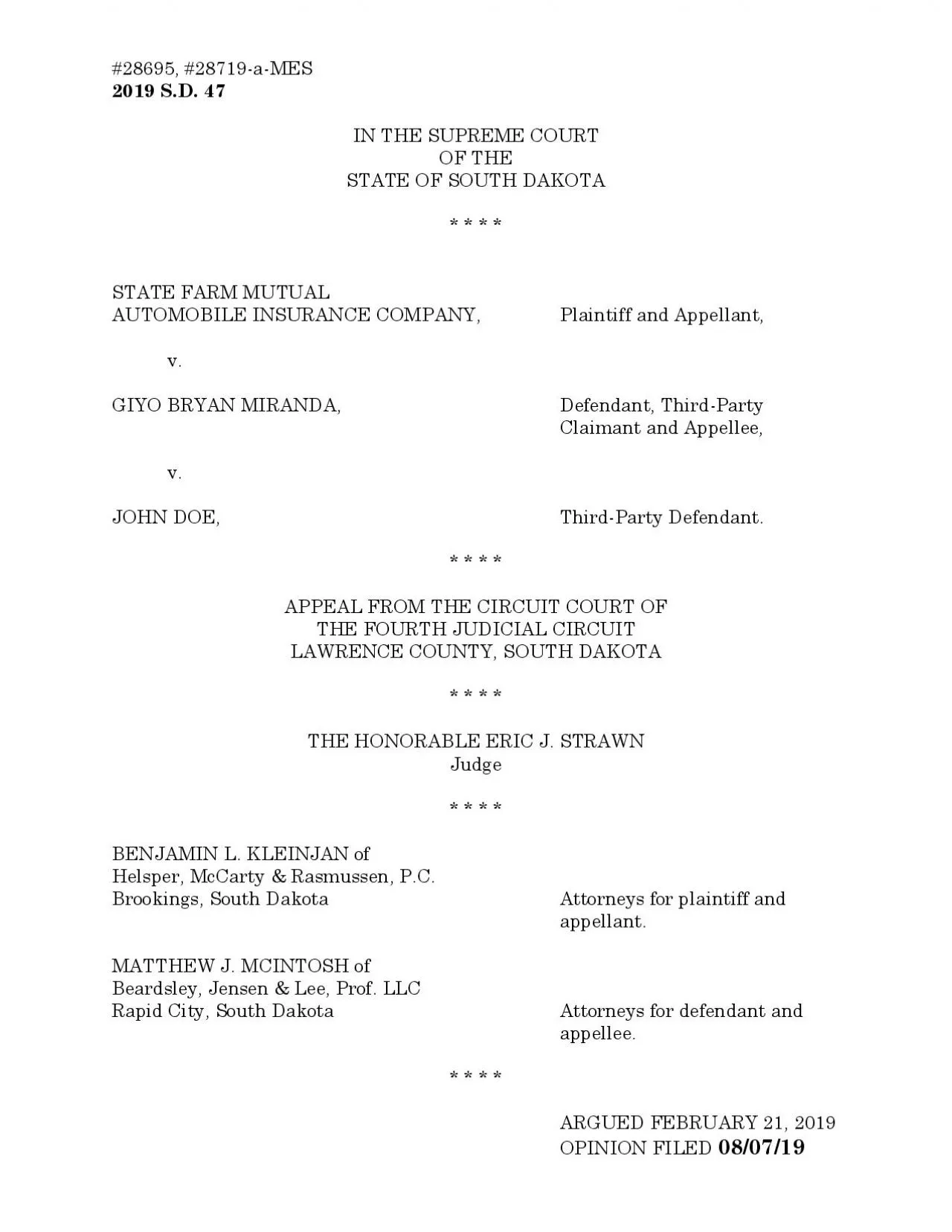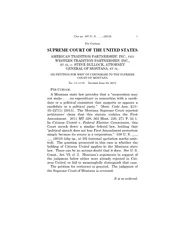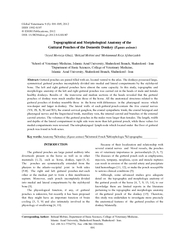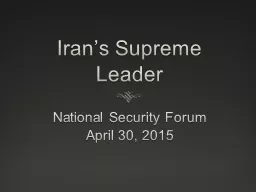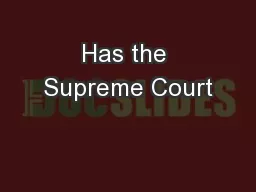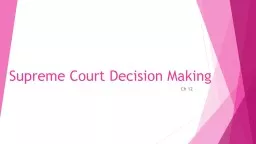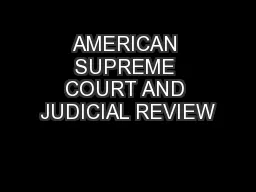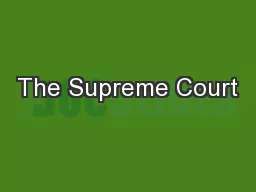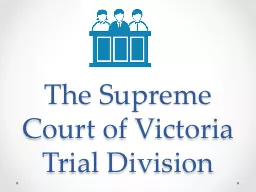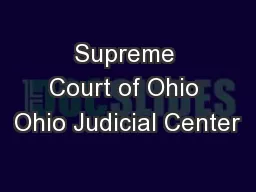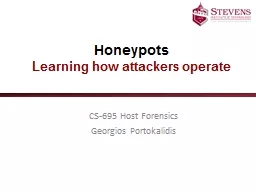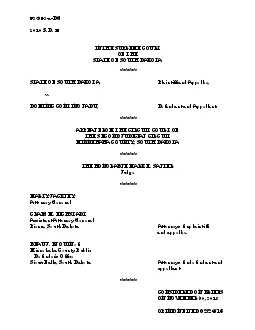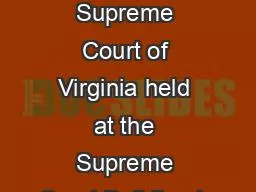PDF-695 28719MESSD IN THE SUPREME COURTOF THESTATE OF SOUTH DAKOTASTAT
Author : jacey | Published Date : 2021-06-12
x0000x000028695 28719x0000x00001 xMCIxD 0 xMCIxD 0 SALTER Justicee1 Giyo Miranda lost control of his vehicleresulting in a head x0000x000028695 28719x00
Presentation Embed Code
Download Presentation
Download Presentation The PPT/PDF document "695 28719MESSD IN THE SUPREME COURTOF TH..." is the property of its rightful owner. Permission is granted to download and print the materials on this website for personal, non-commercial use only, and to display it on your personal computer provided you do not modify the materials and that you retain all copyright notices contained in the materials. By downloading content from our website, you accept the terms of this agreement.
695 28719MESSD IN THE SUPREME COURTOF THESTATE OF SOUTH DAKOTASTAT: Transcript
Download Rules Of Document
"695 28719MESSD IN THE SUPREME COURTOF THESTATE OF SOUTH DAKOTASTAT"The content belongs to its owner. You may download and print it for personal use, without modification, and keep all copyright notices. By downloading, you agree to these terms.
Related Documents

